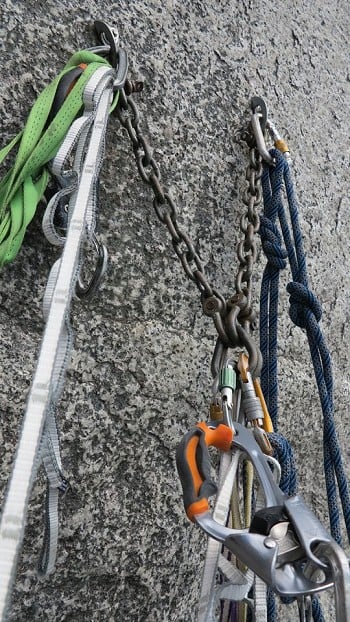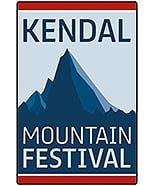
Earlier this week we reported that Pete Whittaker had made an 'all-free' rope solo ascent of Freerider (5.12d) on El Capitan. The route took him just 20 hours and 6 minutes, smashing the previous fastest time of 4 days. Pete flashed the route in 2014, perhaps making it the ideal route for him to try alone. We caught up with Pete to ask him about his experience on the wall. We also tried to get some photos from him, but he left his phone on El Cap...

What initially inspired you to get into rope soloing?
I came back from a Yosemite trip where I’d made the second ascent of The Secret Passage, with my friend Dan. The route felt hard, but when I topped out, I still felt I had a lot more to give. I thought… ‘well I could just go and try an even harder route on El Cap, or I could just try something completely new altogether.' Climbing a big wall by yourself seemed harder, as you had to do everything; preparation, leading, cleaning, seconding, belaying, rope work, motivation, etc etc. It sounded hard, so I thought maybe I’d try that.

A while back I gave Andy Kirkpatrick a Wide Boyz DVD, in return he gave me a solo technique book. At the time of the swap, I flicked through it, then sacked it off as it didn’t apply to me. However when I came back to this book, with the idea of climbing big stuff by myself, it turned out to be a complete gem of information. I think I read it 4 times cover to cover.
I bought the appropriate equipment then just started practising on the grit. Initially I had trouble with the device and ropes, but in a passing conversation with Andy he released another gem of information to me, which I don’t think is that important to most rope soloists who aid climb. But it completely changed it for me, as I wanted to free climb. I went from having a difficult time, to feeling like I could lead pitches nearly as comfortably as with a belayer.
After practising how to actually lead a pitch on the grit, I went to Squamish to learn how to do multipitch routes, in preparation for Big Walls in Yosemite.
What made you choose Freerider?
As I had decided I wanted to go to Yosemite, I started looking into possibilities for what to do there. Should I do a hard multi-day route? Do something in a push? Free? French free? As I started looking into these things, solo achievements in Yosemite, it became apparent to me that El Cap had never been freed, in a day, solo. In fact it had actually only been freed, solo, twice before. Once in 7 days, once in 4 days. The goal was obvious from that point. I wanted to make the first 1 day, ‘all free’ solo ascent. Freerider seemed the obvious choice, as it's the easiest free way up and full of cracks - which suits me.
Do you get scared or have any ‘moments’?
Before setting off, I was way more nervous than I am when setting off with a partner. However, once I was at the first stance, I didn’t even think about it anymore, I can’t remember being scared on the whole route. I think I might have been more relaxed on my own. Maybe it's because you have to concentrate more.
Can you talk me through the systems that you use?
There are three main stages to rope soloing.
- Leading a pitch
- Abbing and cleaning a pitch
- Re-climbing the pitch via some method.
Leading - I’ll fix the rope to the anchor, then use a solo device (Silent Partner) to attach myself to the rope. I call the device Mike, named after a very postive friend. It's important to be positive when you're by yourself. I then use another traction system to manage the spare rope. As I’m free climbing it's hard to untie back up loops (which aiders use) and they also get in the way, so I don’t use them. However, if I know there is a hard section coming up I’ll tie a back up knot in the rope.
Abbing and cleaning - once you’ve led the pitch, you don’t have a partner to second, clean and unfix your rope from the lower anchor, so you have to fix your ropes and go back down and do this.
Re-climbing the pitch - Unless the terrain is not straightforward, the easiest way to get back up to your new highpoint is to jumar your fixed line.
I know you made a few mistakes in Squamish, would you say you were more efficient this time?
I didn’t make many mistakes with my systems, but I made mistakes with conditions, big days out and logistics of the challenges. In Yosemite I didn’t make these mistakes and planned really carefully my timings, conditions, food, hydration, footwear, skin, racking etc etc. It's easy to overlook all these little things as you’re so focussed on the route, the climbing and getting your systems right. However, if you get lots of little things wrong, you’re likely to end up having a bit of a disaster.
Talk me through the day itself.
I set off at 3.02pm and climbed to Heart Ledges (first 11 pitches, but easier and low angle) in 3.5 hours. Although I was pleased with this time, I actually went quite slowly and got my ropes stuck a couple of times, which was annoying.
By the time I got to Heart Ledges it was completely dark. The pitches to the bottom of The Monster Offwidth went smoothly apart from one issue with my bag getting really stuck 80m below me, and had to ab all the way down to retrieve it.
At the base of The Monster Offwidth is where I just started to feel some fatigue. The Monster went the worst it's ever gone and by the top I had beasted myself. I felt pretty toasted by The Alcove. I slogged out the next pitches to the first crux The Boulder Problem. After a little slip at the first bolt, I did it second go, which mentally gave me extra energy as I’d lead, cleaned and jugged this pitch in about 20mins.
The last crux, The Endurance Corners, a few pitches higher, were well pumpy. I was boxed. Every pitch after this felt hard and steep. Jugging felt hard and my skin was burning from so much rope handling over the past hours.
What happens when you’ve got no one to high 5 at the top?
The last pitch is a grade of Diff (5.5). I packed everything away and just soloed out. I got lucky that there was no one else on Freerider when I was climbing (apart from a friend who took some photos of the pitch from Heart Ledges) and also no one at the top. I was glad there was no one there when I topped out, the whole idea was to do the wall by myself, and it felt good not to be interrupted.
So what happens? Not very much. It's probably not for everyone!
Kendal 2016

Kendal Mountain Festival is by far the largest and most varied event of its type in the world - it is also the main social event for outdoor enthusiasts in the UK.
'Kendal' is one of the leading festivals of its kind in the world. It is an internationally-known event, attracting film premieres from around the globe. Film makers, TV producers, adventurers, climbers and world-class lecturers gather to take part in four packed days of the very best films, speakers, books and exhibitions covering all aspects of mountain and adventure sports culture. It is also the main social event for outdoor enthusiasts in the UK and 2016 will be our 17th straight year.
- Book tickets on the KENDAL MOUNTAIN FESTIVAL SITE
- Grab a Film Pass here: FILM PASS
Pete is sponsored by: Climb On, Five Ten, Patagonia, Sterling Rope and Wild Country











Comments